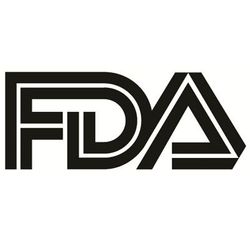
OR WAIT null SECS
Lower Solar Radiation Linked to Higher Use of Systemic or Light Therapy in Psoriasis
These findings indicate that lower ambient solar radiation is linked with more frequent systemic psoriasis therapy.
Lower levels of ambient solar radiation are linked to increased odds of being provided with systemic therapy or phototherapy for individuals with psoriasis, new findings suggest, with such treatments functioning as potential indicators of more severe psoriasis levels.1
These data resulted from an analysis written by Brad R. Woodie and Alan B. Fleischer Jr. from the University of Cincinnati College of Medicine. Woodie et al. noted that data on seasonal variation in the levels of psoriasis severity, including improvements during the summer months, have indicated benefits of ambient solar radiation.
However, the investigators pointed to additional research that demonstrated conflicting results with regard to such benefits. To address related questions, they carried out their analysis.
“Using a diverse sample of the United States, our study assessed the association of annual local solar radiation with psoriasis treatment intensity,” Woodie and colleagues wrote.1
The investigative team used de-identified participant data from version 7 of the National Institutes of Health's 'All of Us' Research Program for their analysis. This program included information that was previously collected in the timeframe between 2017 - 2022.
The team sought to minimize the inclusion of trial subjects who might require systemic immunosuppressive therapies for unrelated conditions. They did so by excluding individuals with diagnoses of rheumatoid arthritis, psproatoc arthritis, systemic lupus erythematosus, uveitis, atopic dermatitis, Crohn’s disease, or ulcerative colitis. Overall, there were were 7748 subjects with diagnoses of psoriasis that they identified.
The investigators' final cohort comprised of 5179 participants following the exclusion of those with missing data for 3-digit ZIP codes or body mass index (BMI), as recorded in electronic health records. This team adhered to the Strengthening the Reporting of Observational Studies in Epidemiology (STROBE) guidelines for this analysis.
The research team looked at treatment intensity using an assessment of whether those evaluated had been given systemic psoriasis medications or phototherapy. Data on mean annual global horizontal irradiance (GHI) from 1998 - 2016 across the contiguous United States was also assessed, following the information's collection via the National Renewable Energy Laboratory that was also mapped by ZIP code.
The team looked into a set of descriptive statistics, including means with standard deviations and categorical frequencies with percentages. GHI was categorized into quartiles:
- Quartile 1 (<3.97 kWh/m²/day): e.g., Seattle, Washington
- Quartile 2 (3.97–4.05 kWh/m²/day): e.g., Chicago, Illinois
- Quartile 3 (4.05–4.92 kWh/m²/day): e.g., Atlanta, Georgia
- Quartile 4 (>4.92 kWh/m²/day): e.g., Los Angeles, California
Treatment odds by ZIP code GHI were evaluated by the investigators using multivariable logistic regression. They adjusted for factors such as age, deprivation index, BMI, race, sex that was assigned to subjects at birth (hereafter described as “sex”), and ethnicity. The investigators also included deprivation index, which they describe as a composite measure formed by the 'All of Us' program incorporating such elements as education level, poverty, housing, and lack of health insurance, which they evaluated at the census tract level.
The investigative team evaluated this data for their analysis, including it to account for potential disparities in participants' access to healthcare.
Overall, there were 5179 subjects who had psoriasis and 1028 who were shown to have received systemic therapy or phototherapy. Female sex and obesity were linked to higher treatment odds, as was a lower GHI in a participant’s ZIP code.
However, individuals over the age of 75 were found by the investigators to have been less likely to be provided with systemic treatments or with phototherapy. They did not identify any significant associations between participants' treatment intensity and their race, deprivation index, or ethnicity.
“Limitations include the All of Us Program being a volunteer-based sample of only the United States,” they acknowledged.1 “Also, we cannot account for people's movement to areas of different solar irradiance or outdoor activities that increase ultraviolet radiation exposure. Clothing coverage is another determinant of personal solar radiation exposure for which we could not account.”2
References
Woodie, B.R. and Fleischer, A.B., Jr (2025), Ambient Solar Radiation Predicts Psoriasis Treatment Intensity. Photodermatol Photoimmunol Photomed, 41: e70014. https://doi.org/10.1111/phpp.70014.
A. W. Schmalwieser and S. S. Schmalwieser, “Exposed Body Surface Area—A Determinate for UV Radiant Energy in Human UV Exposure Studies,” Photochemistry and Photobiology 99, no. 4 (2023): 1057–1071, https://doi.org/10.1111/php.13737.


